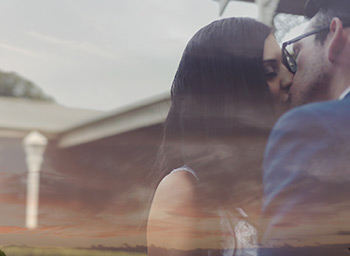Documentary and cinematic videography are two distinct styles of film making. If you watch any well produced wedding video, you will notice the two styles being incorporated throughout the production, each style being used for different parts of the day. But why the two?
The reason is that a wedding is more than just a serious of rituals that need to be documented. It is also a day that brings family and friends together to share and celebrate the commitment made by a loving couple. Of no surprise, this comes with a vast amount of emotions of which only a cinematic approach to the work can truly express.
The coverage of the varied rituals and traditions that make up the union of two people, whether they are Jewish, Hindu, Catholic, Muslim or a civil service; is captured in a documentary fashion. The reason is that these events are intended to be relived as it happened, and should be captured in an objective way.
While for other parts of the wedding day, a cinematic approach is taken by your videographer who will add his/her impressions and will seek to creatively express not only the love between the couple, but also the environment in which the wedding is taking place, the atmosphere of the day, among many other elements.
A wedding videographer has to be well versed in both the documentary and the cinematic approach to film making. This is actually very difficult to do and do well. To appreciate this difficulty let’s first explore the ultimate cinematic format, the feature film.
It takes months to finish shooting an hour and a half feature film. A shot that lasts 30 seconds at the cinema can take hours or even days to shoot. A cinematographer spends hours preparing the lights, while the set designers and props prepare the scene and the director rehearses or blocks the scene with the actors. A wedding videographer has no such luxury. There are no actors at a wedding and no rehearsals; if something goes wrong there’s no chance for a reshoot. In movies they film several takes and pick the best moment; weddings are a one-take deal.
The aim, when shooting a cinematic sequence, is for the director to have control over everything; lighting, makeup, costume and even the weather if shooting in a studio. This is not the case with a wedding videographer, who is there to record an event that he/she has had no input in putting together.
In fact, if the art of cinema is to create the moment, wedding videographers (like the documentary filmmakers), have to find the moment. But, unlike documentaries, the audience of a wedding video is the couple and their families and friends. To this audience what they are watching on the screen is not a documentary, or a story but something more intimate: a memory. This is key to what makes wedding videography unique, precious and difficult to do well: documentary and fiction filmmakers have to live up to the story, but videographers have to live up to the memories. And make on the go decisions on what would be entertaining to watch after the wedding and what would be sentimental to view in many years to come.
–


